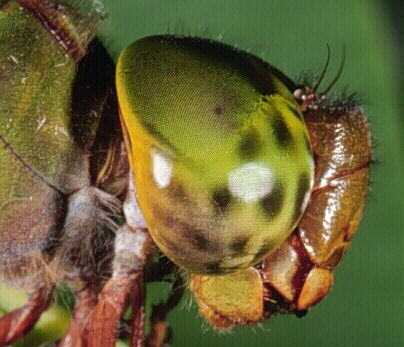

Head of Gynacantha dobsoni, a crepuscular (dawn and dusk)
aerial hunter.
Photo Stephen Richards. Copyright © 1997 Stephen Richards.
Adult Odonata possess extremely acute eyesight. Note the complex structure of the eye with different-sized facets in different regions of the eye. These facets differ in both their light-collecting capabilities and spectral sensitivities. The dark spots on the eye are 'pseudo-pupils', physically separated parts of the eye which are 'looking' at the camera. The image is processed in giant 'optical-lobes' lying behind the eye's surface.
Note also the simple ocelli at the base of the bristle-like antennae. Ocelli have good light-gathering power and are used in maintaining flight orientation and stablity.




 Go to quick links
Go to quick search
Go to navigation for this section of the ToL site
Go to detailed links for the ToL site
Go to quick links
Go to quick search
Go to navigation for this section of the ToL site
Go to detailed links for the ToL site